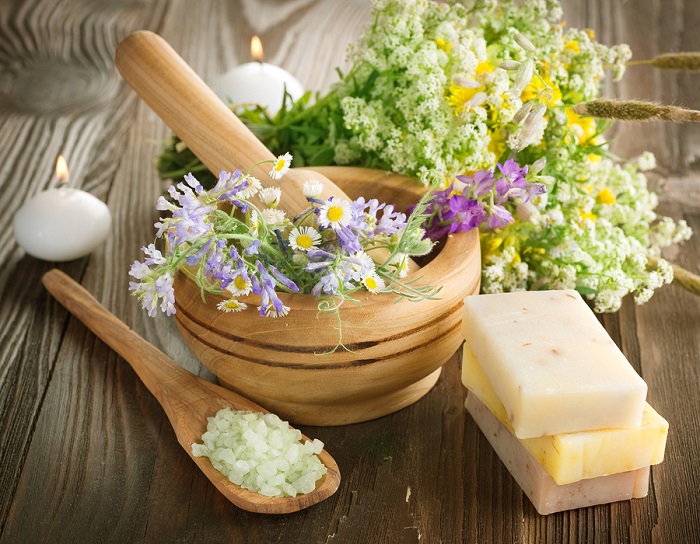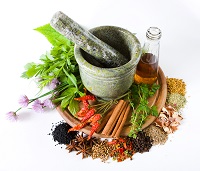Herbal soaps can be hard to find in pure form, for an affordable price, and containing the herbs you need for your specific issues. This is especially true if you live far away from organic stores and you want to see the product first hand before purchasing.
If this sounds like your issue, or if you just want complete control of what goes into your bath and body products, making your own herbal soap may be the ideal option. It is actually easier than you think. Here are the basic steps to make the herbal soap base.
Glycerin or Lye
The first thing you need to do to make your soap, is decide on the base. Both have their advantages, but both bases also have disadvantages that may make you want to shy away from one or the other. The first option is to choose a lye base.
Lye is the more dangerous base to work with and does require hand, body, and eye protection as lye can burn the skin. Lye does however produce a large amount of suds or bubbles which most people, for whatever reason, equate with soap as a whole.
Your other option is to go with a glycerin base. This does not produce as much suds, but it cleans effectively and is clear which can allow you to add bits of herb, other soaps, or even small objects for gifts. With glycerin, you do not need the eye and body protection, but you will need to choose if you want a vegan or vegetable base or a standard glycerin.
Herbal Oils or Dried Herbs
The next step in making your own herbal soap is to determine if you want to use an herbal essential oil or a dried herb. An herbal oil will give you the scent that you would like, but may or may not give you more than a inhalant or topical skin soothing solution. Dried herbs offer both of these benefits and some exfoliate properties.
If you are looking for a soap that helps with dry skin, you may want to use a mixture of the oils and dried herbs. If you are looking for a soap that is suitable for cold and flu season to help with congestion, then an essential oil base for the herb will do nicely.
Soap Molds, Curing, and Creating
Your final step in making the soap is actually making it. You will need the soap mold which can be purchased at most hobby stores or soap making shops. You will also need to follow the directions listed for the manufacturer of the soap lye or glycerin soap base that you have chosen to use. Glycerin requires only a melting, mixing, and curing process while lye requires several other steps to create the soap with each step needing to be followed exactly.
Once you have mixed the base with your oils or herbs, you will need to place the mixture into a mold. The curing time will depend greatly on how hard you want the soap when you cut it and your temperature. Warmer climates will need longer curing times. Once the curing time is finished, remove the soaps from the mold and store or use accordingly.
These are the very basic steps to making your own herbal soap. These are also the considerations many people do not take into account when purchasing a soap making kit or supplies.

